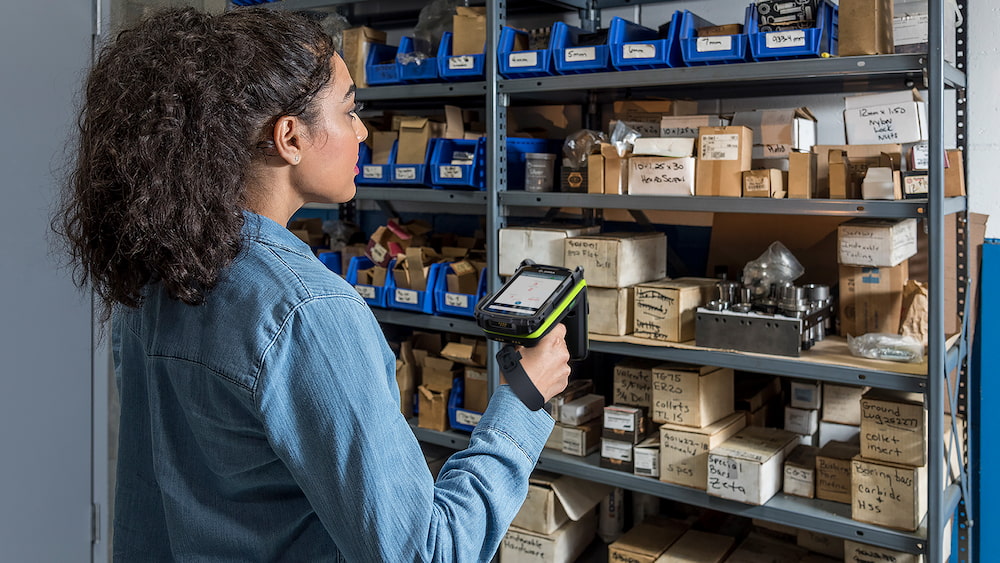Radio Frequency Identification (RFID) is revolutionizing the logistics industry. This technology transcends the limitations of traditional barcodes, enabling real-time, automated visibility into every item, pallet, and container in the supply chain. Companies are leveraging RFID to achieve unprecedented efficiency, accuracy, and resilience. This article explores the technical advantages, key applications, measurable benefits, and implementation considerations of RFID in modern logistics.
Core Benefits of Logistics
Unprecedented Inventory Accuracy
Manual inventory counting is slow and prone to errors. Studies show that manual inventory counting accuracy typically ranges from 63% to 75%. RFID can boost accuracy to 99.9% or higher. This "perfect visibility" eliminates out-of-stocks and overstock and lays the foundation for all other logistics improvements.
Significantly Improved Labor Efficiency
RFID automates labor-intensive processes. Operations such as receiving, putting away, and cycle counting no longer require manual labor. Warehouse doors equipped with RFID access control systems can identify every item on a pallet in seconds. Using a barcode scanner, this task might take an employee 30 minutes. In these areas, labor costs can be reduced by up to 40%.
Enhanced Supply Chain Visibility
RFID provides a digital thread from manufacturer to end customer. Businesses gain real-time visibility into the location and status of goods. This visibility enables proactive decision-making. For example, managers can reroute goods in transit to meet a sudden surge in demand in another region. This reduces delays and improves customer satisfaction.
Significantly Reduces Loss and Theft
Shrinkage is a significant cost. RFID is a powerful deterrent and tracking tool. Unauthorized movement of goods triggers an immediate alert.
Key Applications in Logistics Workflows
Inbound Logistics: Receiving and Putaway
When a truck arrives at the warehouse, an RFID gate instantly reads all tagged pallets and boxes. The system automatically updates the warehouse management system (WMS) and verifies that the received goods match the purchase order. Putaway instructions are then generated, directing staff to the correct locations.
Warehouse Management: Storage and Picking
Forklifts equipped with card readers can automatically confirm that they are storing or retrieving the correct pallet. For order picking, RFID-guided pick-light or put-away-light systems ensure near-perfect accuracy. This reduces picking errors, a leading cause of order fulfillment errors and returns.
Outbound Logistics: Shipping and Verification
Before leaving the dock, goods pass through an RFID-enabled gate. The system automatically verifies that the goods for the outbound order have been loaded onto the truck. This final quality check prevents costly shipping errors, ensures customers receive their ordered goods, and enhances brand trust.
Last-Mail Delivery and Returns
Parcel lockers can use RFID technology to verify the security of package storage and pickup. For returns, simply scanning the item's RFID tag instantly verifies the item and its origin. This significantly simplifies the returns process.

Overcoming Implementation Challenges
Addressing Cost Issues
The initial investment in RFID tags, readers, and system integration can be substantial. However, the return on investment (ROI) is very substantial. Most companies can recover their costs within 12-24 months. The cost of passive RFID tags has also dropped significantly, with simple tags now priced as low as $0.05-$0.10 in high-volume production.
Technical and Environmental Barriers
RFID signals are affected by metal and liquids. These materials reflect or absorb radio waves. Modern tag designs have overcome many of these issues. Specialized tags are available for mounting on metal containers or tracking liquid products. Proper site surveys and pilot tests are essential to planning for these variables.
Data Management and System Integration
RFID systems generate massive amounts of data. The real value lies in integrating this data into existing systems. Companies must ensure their IT infrastructure can handle the data flow. They must also build business intelligence tools to transform raw data into actionable insights.
Develop a Phased Implementation Strategy
A "big bang" rollout carries high risk. A phased approach is strongly recommended. Start with a single warehouse or specific product line. Focus on high-value processes, such as improving shipment accuracy. This allows companies to learn, demonstrate rapid results, and build a business case for a larger rollout.
The Future of RFID in Logistics
The Rise of "Smart" Packaging
RFID tags will evolve from simple identifiers to data-rich "smart labels." Integrated sensors will record the complete history of a product: temperature, tilt, and even tampering. This will create an immutable digital record of its custody and condition.
Integration with AI and the Internet of Things
RFID is a foundational technology for the Internet of Things (IoT) in logistics. When combined with artificial intelligence (AI), this data will possess predictive capabilities. Artificial intelligence can analyze RFID-driven inventory data to more accurately forecast demand. It can also optimize warehouse layouts and picking routes in real time.

Conclusion
As technology advances, the integration of RFID with AI and the Internet of Things will further transform logistics into a truly intelligent, self-optimizing network. For any logistics manager or executive, the question is not whether to adopt RFID, but when to begin the implementation journey.

Chat NOW
Scan to wechat :

Scan to Whatsapp :
